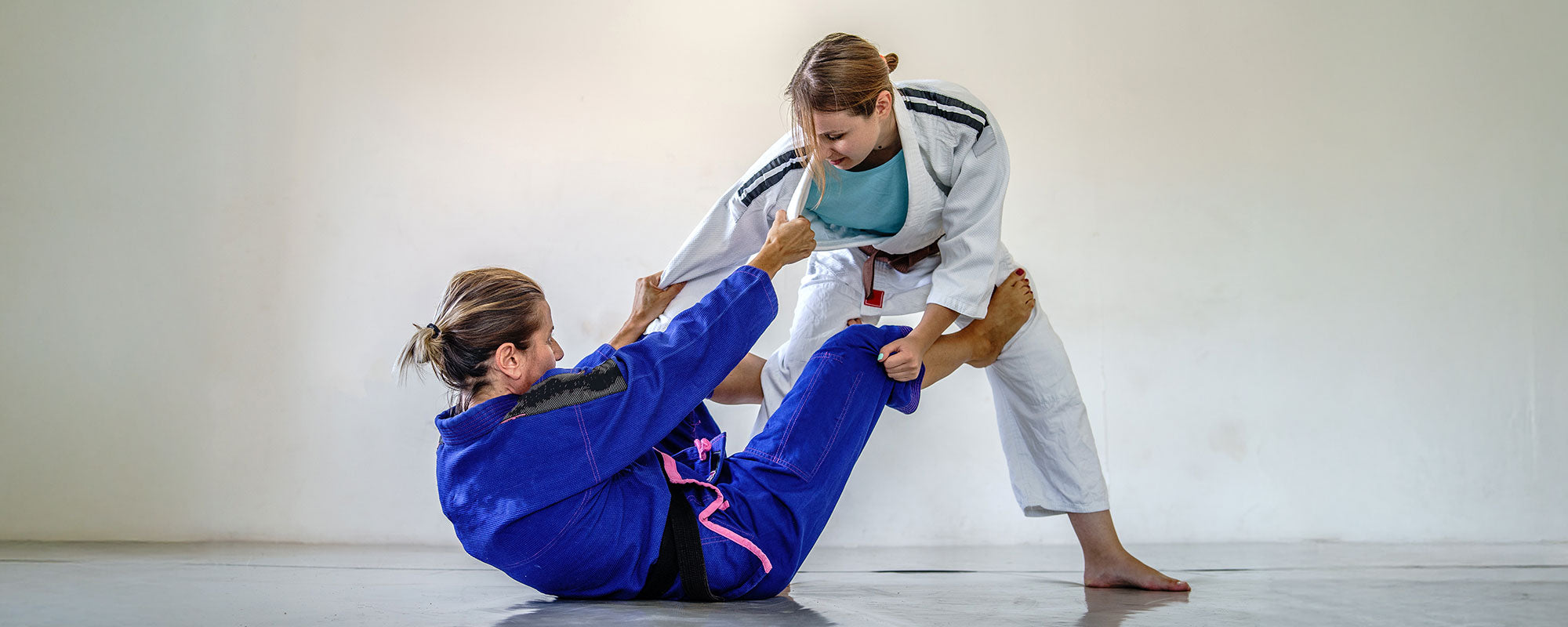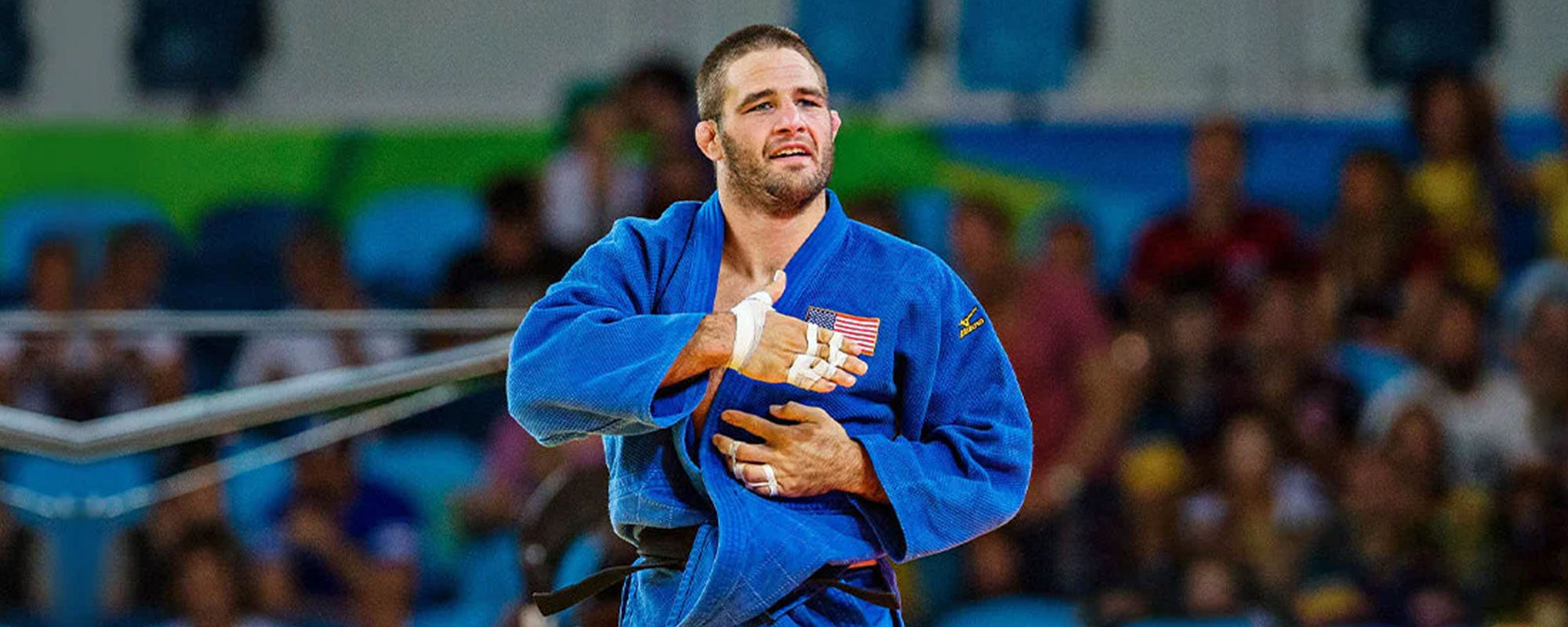Table of content
Fat loss is a time-consuming process. Most people lack the patience or the time to invest in a long fat loss journey. They look for quick and doable solutions that are applicable in their lives and provide desired results. Luckily, such a solution does exist and is called HIIT!
In this article, there are six 30-minute full-body HIIT workouts that you can do throughout the week. There is a combination of 30-minutes low-impact workouts and 30 minutes intense HIIT workouts in this plan. With these HIIT workouts, you will become slim and trim in no time.
Whether you are at the beginner or advanced level, you can easily customize this plan according to your bodily needs.
Let’s discuss what HIIT is and how it helps us to achieve our fat loss goals!
1. What Is HIIT?
High-intensity interval training (HIIT) utilizes time interludes. HIIT involves short, extremely powerful bursts of exercise followed by less intense activity and short-term rest/pause periods.
According to a study in Sports Medicine:
“HIIT is an effective way of burning complete body fat.”
Therefore, HIIT is the best exercise option for people who aspire to become fit but don’t have much time to spare for exercise.
The sports dietician and certified personal trainer, Jenna Braddock, RDN, ACSM-CPT says,
“HIIT promotes a more enjoyable experience with fitness.”
“HIIT disrupts the physiological state (homeostasis) of the body more than aerobic exercises. After exercise, more energy is required to bring the body’s systems back to normal. As a result, the metabolic rate is amplified and more calories are burned even at rest.”
2. How Many Calories Does a 30-Minute HIIT Workout Burns?
On average, one hour of intense exercise burns approximately 850 calories. If we divide that number in half, considering we aim to do a HIIT workout for 30 minutes only, it will help burn roughly 425 calories.
3. Are 30 Minutes of HIIT Every Day Enough to Lose Weight?
Before you begin, bear in mind that you should not do HIIT every day. Doing HIIT every day increases the risk of injury and burnout because your muscles do not get enough time to recover.
The Insider recently reported a study by the Swedish School of Sport and Health Sciences. According to their findings:
“The research participants who performed long HIIT workouts every day suffered from stagnant fitness gain and deteriorated health.”
We will follow the “less is more” principle with our HIIT program. The plan consists of three high-intensity, two moderate-intensity, one low-impact HIIT workout, and one day of rest.
Three days of high-intensity HIIT is enough to burn 2-4 lbs of fat per week.
4. HIIT Weekly Workout Plan
Here is a HIIT workout plan to get you started. The week-long plan will help you strike the perfect balance of vigorous and low/moderate impact HIIT workouts. We have reserved one day for rest and recovery. There are no hard and fast rules, feel free to customize this plan according to your needs.
4.1. 30-Minute Running Workout - High-Intensity
This is a good 30-minute workout that targets excess fat. You will lose substantial amounts of fat through this workout.
Warm-Up:
Do five minutes of slow walking and five minutes of brisk walking. You can also do five minutes of jogging for warm-up.
Workout:
After you finish your warm-up, perform 10 HIIT rounds:
- Run fast for two minutes with maximum exercise effort. This HIIT workout is challenging and should increase your heart rate by 80-85% of your maximum exercise effort. Once you get accustomed to hitting 85%, aim for the ideal 90% exercise effort.
- Walk briskly hitting for one minute using 20-55% of your exercise effort.
- Repeat.
- For the best results, perform this workout twice every week for a month.
Calories Burnt:According to a report by Harvard University, a person weighing 70 kg (155 pounds) can burn about 372 calories after completing a 30-minute HIIT interval run.

Cool Down:
Walk slowly for 15 minutes to cool down your body.
Why is 80-90% running effort important?
According to Len Kravitz, the author of HIIT your Limit:
“The intensity levels of an exercise during work intervals stimulate positive responses in the heart and muscles.”
Therefore, for the high-intensity intervals, achieve 75-90% of the maximum heart rate. For the low-intensity intervals, aim for 50-65% of the maximum heart rate.
How to Calculate Heart Rate for HIIT?
According to the Centers for Disease Control and Prevention (CDC), you can calculate your heart rate based on your age. All you need to do is subtract your age from 220.
Use this example to calculate your maximum heart rate:
For a 20-year-old the maximum heart rate would be:
220 - 20 = 200 beats per minute (bpm)
The maximum 85% level would be: 200 x 0.85 = 170 bpm
The 55% level would be: 200 x 0.55 = 110 bpm
4.2 HIIT Resistance Training - Moderate-Intensity
Warm-Up:
Warm-up for 10 minutes with these exercises:
- Arm Swings (six times)
- Standing Hip Circles (each leg, 10 times)
- Shoulder Rolls (clockwise and anti-clockwise, 10 times for both sides )
Workout:
Perform three sets of 15 reps for six different full-body exercises: squats, push-ups, lunges, planks, pull-ups, and curl-ups. Take a one-minute rest in between exercises.
This 30-minute HIIT workout exercises your entire body: the upper body, lower body, and core. Moreover, it does not include a cardio workout. Beginners should start with exercises appropriate to their body weight and slowly add weight to the HIIT workout.
| Exercise | No. of Sets | No. of Reps | Total Time 18 Mins |
Rest 13.5 Mins |
No. of Calories Burned Per Minute |
|---|---|---|---|---|---|
| Bodyweight Squats (Lower Body) |
3 | 8 | 8 Reps in 1 minute. 180 secs/set |
45 seconds after each set | Depends on body weight |
| Push-up (Upper Body) |
3 | 8 | 8 Reps in 1 minute. 180 secs/set |
45 seconds | 8.56 calorie per minute |
| Lunge (Lower Body) |
3 | 8 | 8 Reps in 1 minute. 180 secs/set |
45 seconds after each set | 5.33 calories per minute |
| Planks (Core) |
3 | 8 | 8 Reps in 1 minute. 180 secs/set |
45 seconds after each set | 4 calories per minute |
| Pull-up (Upper body - Back Muscles) |
3 | 8 | 8 Reps in 1 minute. 180 secs/set |
45 seconds after each set | 9.95 calories per minute |
| Curl-up (Upper body - Abdominal) |
3 | 8 | 8 Reps in 1 minute. 180 secs/set |
45 seconds after each set | 4.09 calories per minute |
Calories Burnt
- Lunges burn 5.33 calories per minute.
- Push-ups burn 8.56 calories per minute.
- Pull-ups burn 9.95 calories per minute.
- Curl ups burn about 4.09 calories per minute.
- Planks burn 2 to 5 calories per minute.
- The no. of calories a person burns through squats depends on his/her body weight.
Cool Down:
Walk for 10 minutes and spend five minutes on stretches:
- Leg Stretch (30 seconds, each leg)
- Hip Flexors (30 seconds, alternate sides)
- Downward Dog (One minute)
- Cobra Stretch (One minute)
- Hamstring Stretch (One minute)
4.3. 30-Minute Low-Impact HIIT Workout
As already explained, doing high-intensity training can lead to muscle damage. Play around with the intensity level. For example, if you did a high-intensity workout today, switch to a moderate-intensity workout tomorrow.
Warm-Up:
Do not skip warm-up even if you are doing a comparatively low-intensity workout.
Take out 5-10 minutes for a slow walk.
Workout:
One of the best things about HIIT - it is never boring. You can make the workout more fun by doing an activity that you enjoy.
- This could be anything from brisk walking, running, hiking, dancing, and even yoga.
- Make sure that you do not surpass the 65-70% exercise effort threshold and do not exercise for more than 30 minutes.
Calories Burnt:A moderate HIIT cycling, hiking, or running session will help you to burn around 350 - 390 calories.
Cool Down:
After this workout, a slow walk outdoors is the perfect cool down for your body.
4.4. Jump Rope - High-Intensity
Warm-Up:
Walk for 10 minutes or do dynamic stretches for 10 minutes. Here are some easy dynamic stretches:
- Walking Lunges (Five times)
- Large Arm Circles (10 times, swing arms forward first and then backward)
- In Place Jogging (One minute)
- Standing Quad Stretch (10 times)
Workout:

After the warm-up, perform 10 cycles of jumping rope.
- Two minutes of jumping rope (the faster the better).
- Rest for 30-60 seconds.
Calories Burnt:
Most people tend to burn up to 550 calories after a 30-minute HIIT jumping rope.
Cool Down:
Walk slowly for 10 minutes as a cool down.
4.5. 30-Minute HIIT Cardio Workout - Moderate Intensity
Warm Up:
- Do dynamic stretches for 10 minutes and prepare your body for the exercise.
- Five minutes of jogging is also great as a preparatory warm-up.
30-Minute Main HIIT Exercise:
Perform 15 rounds as fast as you can. This will burn some serious calories.
- Perform this workout on an elliptical or go outdoors for cycling. This is a moderate intensity HIIT session that should last not more than 60 seconds per round.
- Rest for 60 seconds, then start again.
Calories Burnt:
This 30-minute workout will help you burn around 290 calories.
Cool Down:
You can walk for 10 minutes to cool down.
4.6. 30-Minute Full-Body HIIT - High-Intensity
Warm Up:
To warm up your body, go for a 10-minute walk or dedicate five minutes to these light stretches.
- Standing Hip Circles (One minute)
- Knee Grabs (One minute)
- Arm Circles (One minute)
- Hip Flexors. (Two minutes)
Workout:
Do three sets of two movements for 45 seconds and rest for one minute afterward. You should complete six intervals, each interval including two different movements. Initially, work with exercises suited for your body weight only. You can add weights or use a resistance band when your body becomes accustomed to the training.
Here are some challenging moves to make your workout more intense:
- Triceps Dips (Works the Upper Body)
- Side Planks (Works the Core)
- Wall Sits (Lower Body)
- Air Squats or Burpees (Cardio)
| 1st Interval | |||
|---|---|---|---|
| Exercise/Movement | No. of Sets | Time | Total Rest |
| Wall Sits and Triceps Dips | 3 | 135 seconds (45 seconds for each set) |
3 minutes (1 minute for each set) |
| 2nd Interval | |||
|---|---|---|---|
| Exercise/Movement | No. of Sets | Time | Total Rest |
| Wall Sits and Burpees | 3 | 135 seconds (45 seconds for each set) |
3 minutes (1 minute for each set) |
| 3rd Interval | |||
|---|---|---|---|
| Exercise/Movement | No. of Sets | Time | Total Rest |
| Side Planks and Burpees | 3 | 135 seconds (45 seconds for each set) |
3 minutes (1 minute for each set) |
| 4th Interval | |||
|---|---|---|---|
| Exercise/Movement | No. of Sets | Time | Total Rest |
| Triceps Dips and Burpees | 3 | 135 seconds (45 seconds for each set) |
3 minutes (1 minute for each set) |
| 5th Interval | |||
|---|---|---|---|
| Exercise/Movement | No. of Sets | Time | Total Rest |
| Side Planks and Triceps Dips | 3 | 135 seconds (45 seconds for each set) |
3 minutes (1 minute for each set) |
| 6th Interval | |||
|---|---|---|---|
| Exercise/Movement | No. of Sets | Time | Total Rest |
| Wall Sits and Side Planks | 3 | 135 seconds (45 seconds for each set) |
3 minutes (1 minute for each set) |
If you become bored easily and want a change, then use the table below to mix and match different exercises and build your own HIIT workout.
| Target Area | HIIT Exercises | |||
|---|---|---|---|---|
| Upper Body | Push Ups | Triceps Dips | Bicep Curls | Reverse Fly |
| Lower Body | Walking Lunges | Donkey Kicks | Pulsing or Plie Squats | Wall Sits |
| Core | Plank | Reverse Crunch | Downward Dog Leg Pull | Russian Twists |
| Cardio | Burpees | Jumping Jacks | Skaters | High Knee Jog |
Calories Burnt:
This complete workout helps to burn approximately 300 calories.
Cool Down:
Spend 10 minutes on walking and an additional five minutes on stretching to cool down your body.
5. General HIIT Workout Guidelines - Up the Ante
Once you have mastered the beginner level, increase the intensity and make your HIIT plan challenging. The following steps will intensify your HIIT workout and boost fat loss and fitness.
- You can extend the exercise interval. For example, if you exercise for 1-2 minutes during the beginner level, increase it to 3-4 minutes. To maintain the high intensity, be sure to not exceed the 4-minute mark.
- You can increase the duration or length of the overall workout by performing more sets and cycles. For example, if you perform three sets of 15 reps, try doing four sets or increase the number of reps from 15 to 20. All of this would be done in a 30-minute workout.
- You can reduce your rest interval. For example, if you take 1-minute rest, bring it down to 45 seconds or 30 seconds but do not remove it completely. The removal of rest intervals will convert your HIIT workout into a steady-state exercise and will not burn fat the way a HIIT workout should.
- Don’t repeat the same moves indefinitely. HIIT is about variation and intensity, so keep changing moves often.
6. Plan a Rest Day
- Give your muscles downtime and let them recover from the effects of intense exercises.
- Gentle stretching with a foam roller is the best “rest-day activity.”
7. HIIT & Diet
HIIT is an effective strategy for weight loss. However, it can only deal with the effects of a bad diet for so long. According to Mayo Clinic,
“To shed one lb of fat, one needs to burn 3,500 calories. The Mayo Clinic also recommends that those who aim to lose weight should consume 500 lesser calories every day to lose one lb of fat in a week.”
Eat Smaller Portion:
Quit eating large portions and opt for smaller portions instead. No matter how hungry you are, help yourself to one serving only.
High Fiber:
Eat meals that have a higher fiber content. Fiber makes you feel full, hence your appetite reduces, you eat less, and you feel fewer food cravings. You can make small tweaks and adopt healthier eating habits to bring down calorie intake. For example, eat fresh vegetables (carrot, cucumber, radish) instead of french fries for snacks. When you are in the mood for something sweet, eat fresh fruit or berries instead of donuts or chocolate cake.
Cheat Day:
You can still have your favorite meals but limit it to a specific day - your “cheat day.” Treat yourself to your favorite food as a reward for sticking to your healthy choices. This will motivate you to continue HIIT exercises and keep boredom at bay.
HIIT burns calories significantly and you are bound to feel hungrier than before. Do not starve yourself in the name of low-calorie intake. Your body requires energy to keep up with the HIIT workouts. It is important to satiate your hunger, otherwise, your health will decline drastically.
Related Reading: Top 8 Dumbbell HIIT Workouts For A Total-Body Burn












Leave a comment
This site is protected by hCaptcha and the hCaptcha Privacy Policy and Terms of Service apply.